Understanding software architecture patterns is essential for any software developer or architect who wants to do well. Knowing which architectural patterns in software engineering to use can make or break a project’s success.
This knowledge not only makes your work better but can also help you move up in your career. In this article, we will talk about what a software architecture pattern is, why it’s important, its benefits, how it differs from design patterns, the types of architecture patterns, and how to select the one that’s right for your project.
Table of contents
- What is a Software Architecture Pattern?
- Benefits of Software Architecture Patterns
- Software Architecture Patterns vs Design Patterns
- Top 10 Software Architecture Patterns
- How to Select the Right Software Architecture Pattern
- Conclusion of Software Architecture Patterns
- Software Architecture Patterns FAQs
What is a Software Architecture Pattern?
A software architecture pattern is a reusable approach to common problems like being unable to update existing components without affecting the system, reusing already developed components, or migrating databases.
It provides a high-level framework along with a set of guidelines for organizing and coordinating the components and their interactions within a software system. Software architecture patterns promote good design practices and help developers create scalable, maintainable, and robust systems.
These patterns often take the form of abstract representations that can be adapted to interact with specific software applications. Built on proven best practices and principles, they serve as templates for addressing design and architectural challenges.
Read our blog, Software Engineering Principles, to help you get the desired results faster in your software project.
Benefits of Software Architecture Patterns
Architectural patterns in software engineering offer a deliberate, tried-and-true method for building software systems. Some benefits include enhanced communication among development teams, reusability, scalability, and maintainability. Due to the solid foundation provided by these architectural patterns, developers can create more reliable and efficient software in less time.
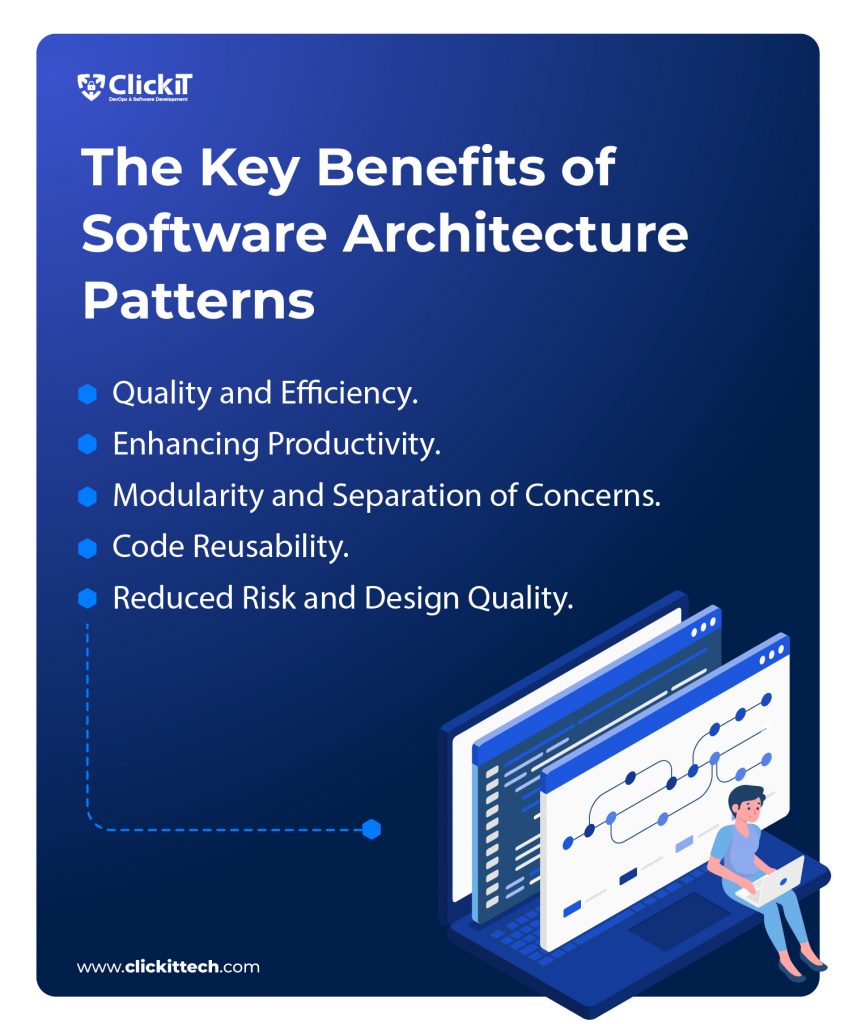
Quality and Efficiency
Architecture patterns promote the use of proven best practices, design principles, and architectural decisions, leading to higher-quality software that is less prone to errors and easier to maintain.
By adhering to established patterns, development teams can work more efficiently, and quality assurance teams find it easier to test the code. Patterns guide informed design decisions, reducing the chances of costly rework or redesign later in the project.
Additionally, software architecture design patterns simplify adding new features, ensuring the software can adapt to future needs. This ultimately improves the quality and efficiency of the software, making it more robust and easier to maintain.
Enhancing Productivity
Architecture patterns offer a structured framework for development, streamlining the process by providing clear guidelines and reducing the need for ad-hoc design decisions, enhancing overall productivity.
Patterns also make it easier for new team members to understand the project’s architecture and design choices, thus speeding up their onboarding process and boosting productivity. Software architecture patterns can enhance team collaboration by offering a common language and framework for system development. This can help reduce misunderstandings and improve communication among developers.
Modularity and Separation of Concerns
Architecture patterns often encourage modular design, where the system is divided into discrete, self-contained components. This modularity makes it easier to develop, test, and maintain individual parts of the system.
Patterns also advocate for separating different aspects of the application, such as the user interface, business logic, and data access, into distinct components. This separation makes both development and maintenance more accessible, as changes in one area are less likely to affect others.
Code Reusability
Architecture patterns encourage the creation of reusable components focused on a specific task and are not tightly coupled to other components. These components can be used across different parts of the system or in other projects, reducing development time and effort.
Patterns frequently define standardized interfaces between components, which makes it easier to replace or upgrade individual parts of the system without affecting the entire application. By providing a framework for communication between modules in a well-defined way, they make it easier to reuse code. Developers can simply use these well-defined APIs to communicate with other modules.
Reduced Risk and Design Quality
Patterns help in identifying and addressing common architectural risks and issues early in the development process. This proactive approach reduces the risk of critical design flaws by providing a proven way to implement common features and solve common problems. This can help to reduce the risk of making mistakes and ensure that the design maintains high quality.
Architectures like layered, microservices, and event-driven reduce the risk of one component’s failure affecting the whole system. They achieve this by dividing the system into layers, using independent services for each component, and decoupling different components of the system, respectively.
Adhering to architectural patterns leads to better design quality, ensuring the architecture aligns with best practices and established design principles, and results in a more robust and maintainable system.
Software Architecture Patterns vs Design Patterns
Software architecture patterns guide a software system’s overall organization and structure. They describe how the system is divided into components, how the components interact, and how the system is deployed.
In contrast. Design patterns focus on the details of implementing individual components, objects, and their interactions. Let’s look at some common design patterns and what they’re used for.
- Singleton pattern: Ensures that there is only one instance of a class.
- Factory pattern: Creates objects without exposing the instantiation logic to the client.
- Observer pattern: Allows objects to be notified when another object changes state.
- Strategy pattern: Allows an algorithm to be varied without changing the clients that use it.
Here is a table that summarizes the key differences between architectural patterns in software engineering and design patterns.
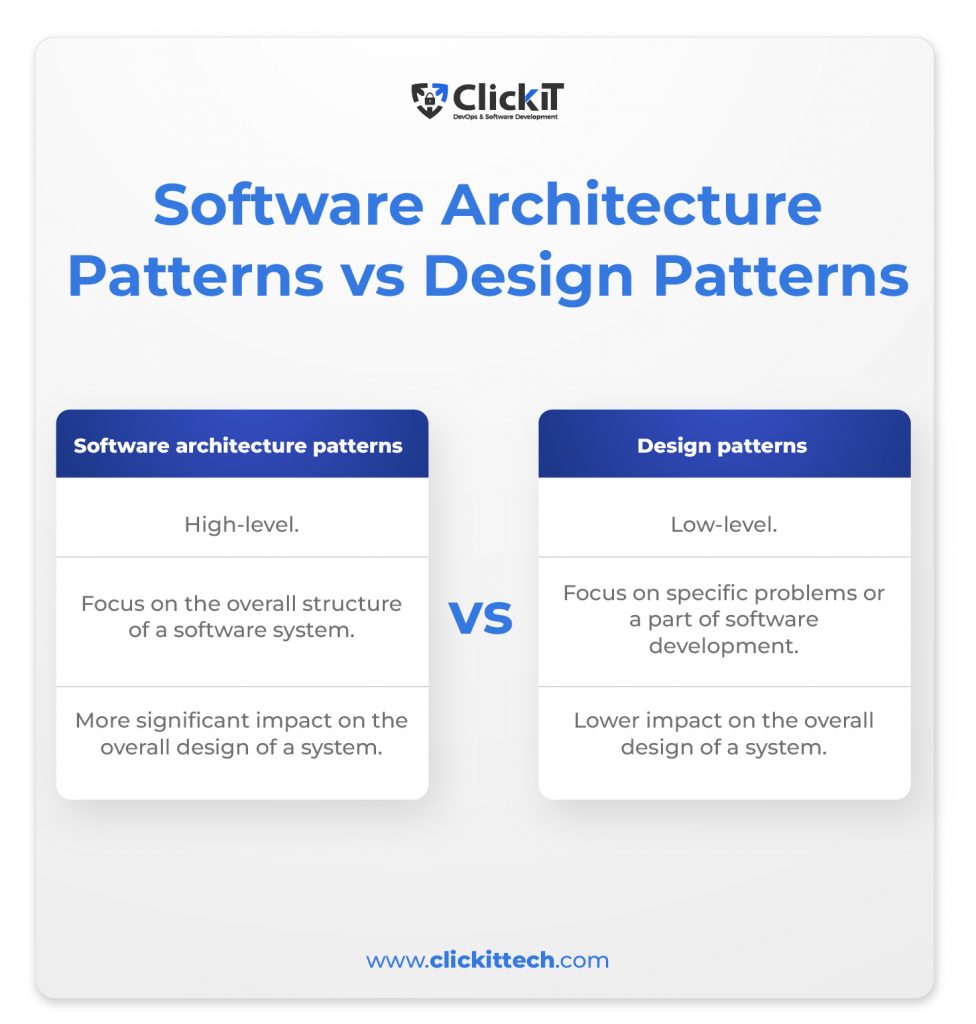
However, there is some overlap between software architecture patterns and design patterns. For example, the Model-View-Controller pattern can be used to implement both a software architecture pattern and a design pattern. Both are crucial for creating robust, maintainable, and scalable software systems.
Top 10 Software Architecture Patterns
In this section, let’s explore the top 10 software architecture patterns. We’ll look into each pattern’s unique characteristics, benefits, and their importance.

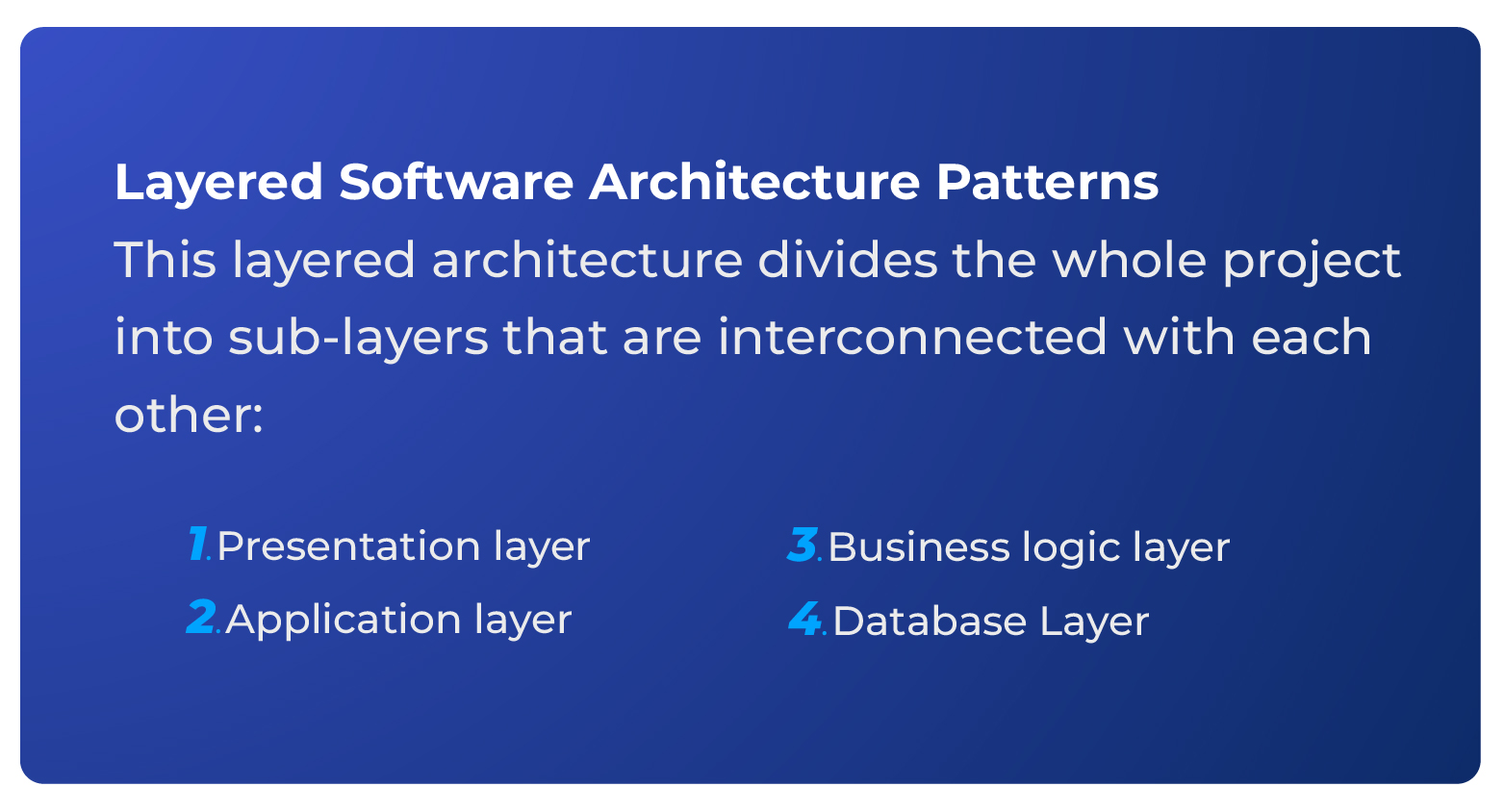

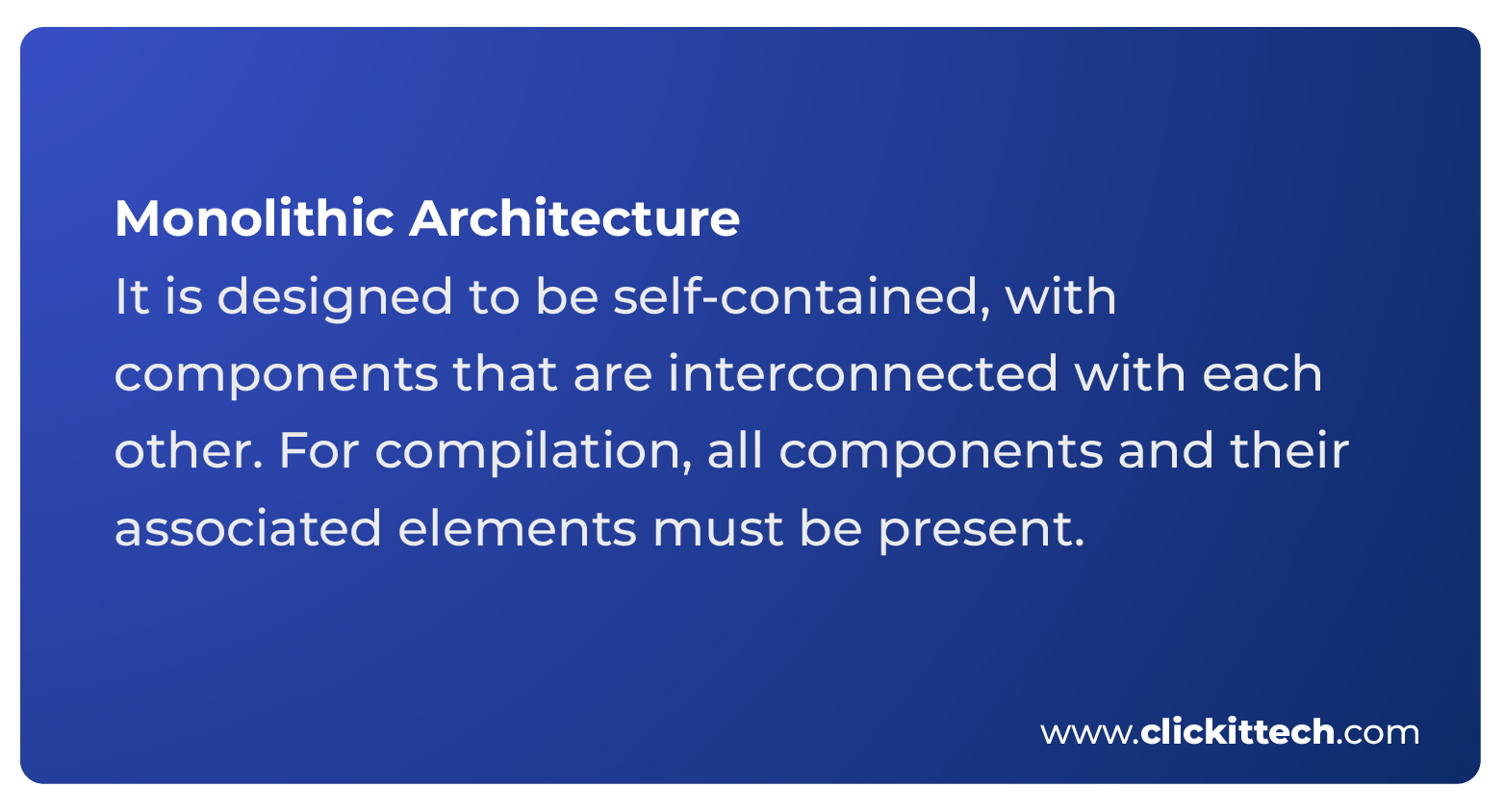
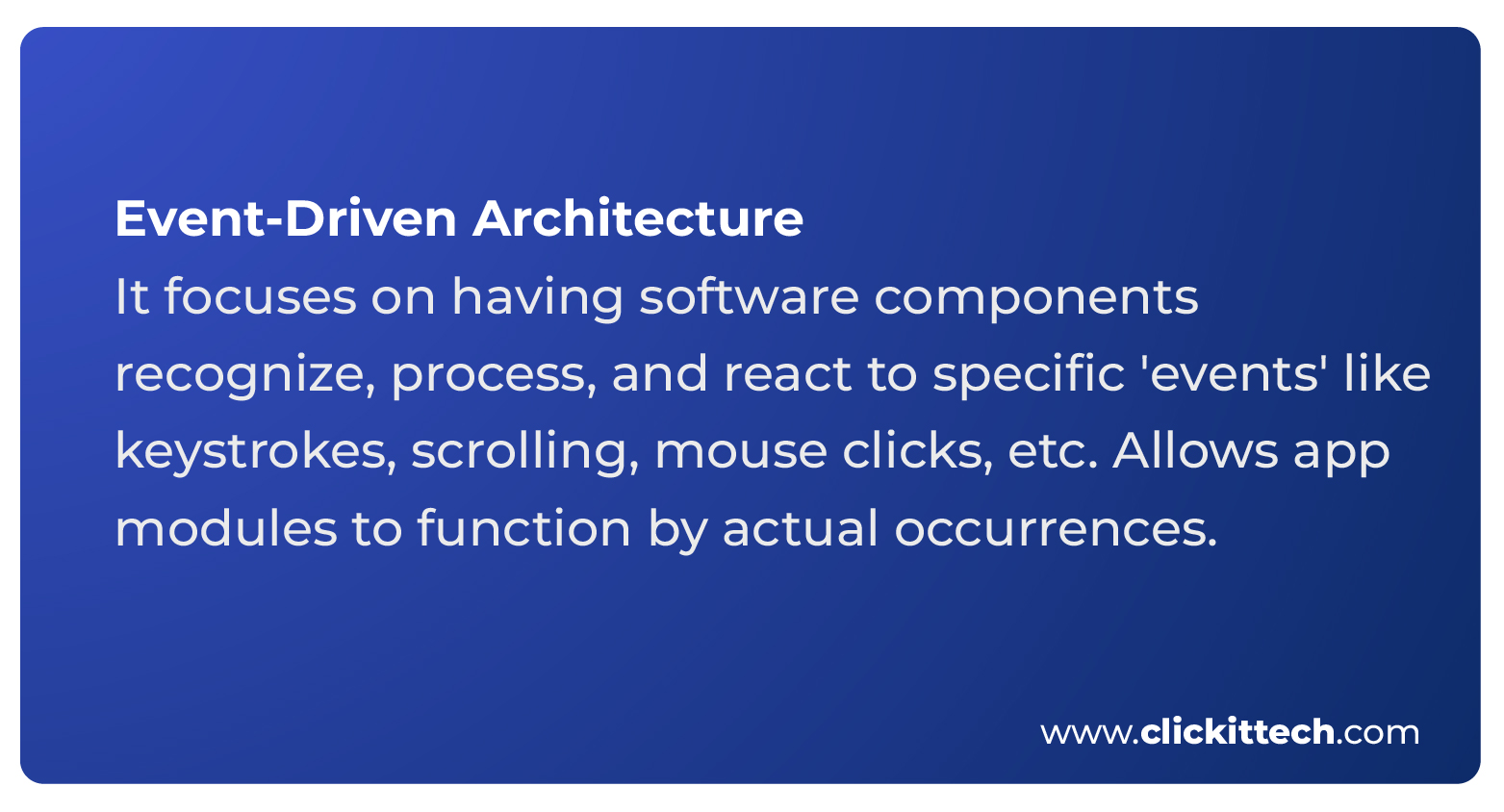

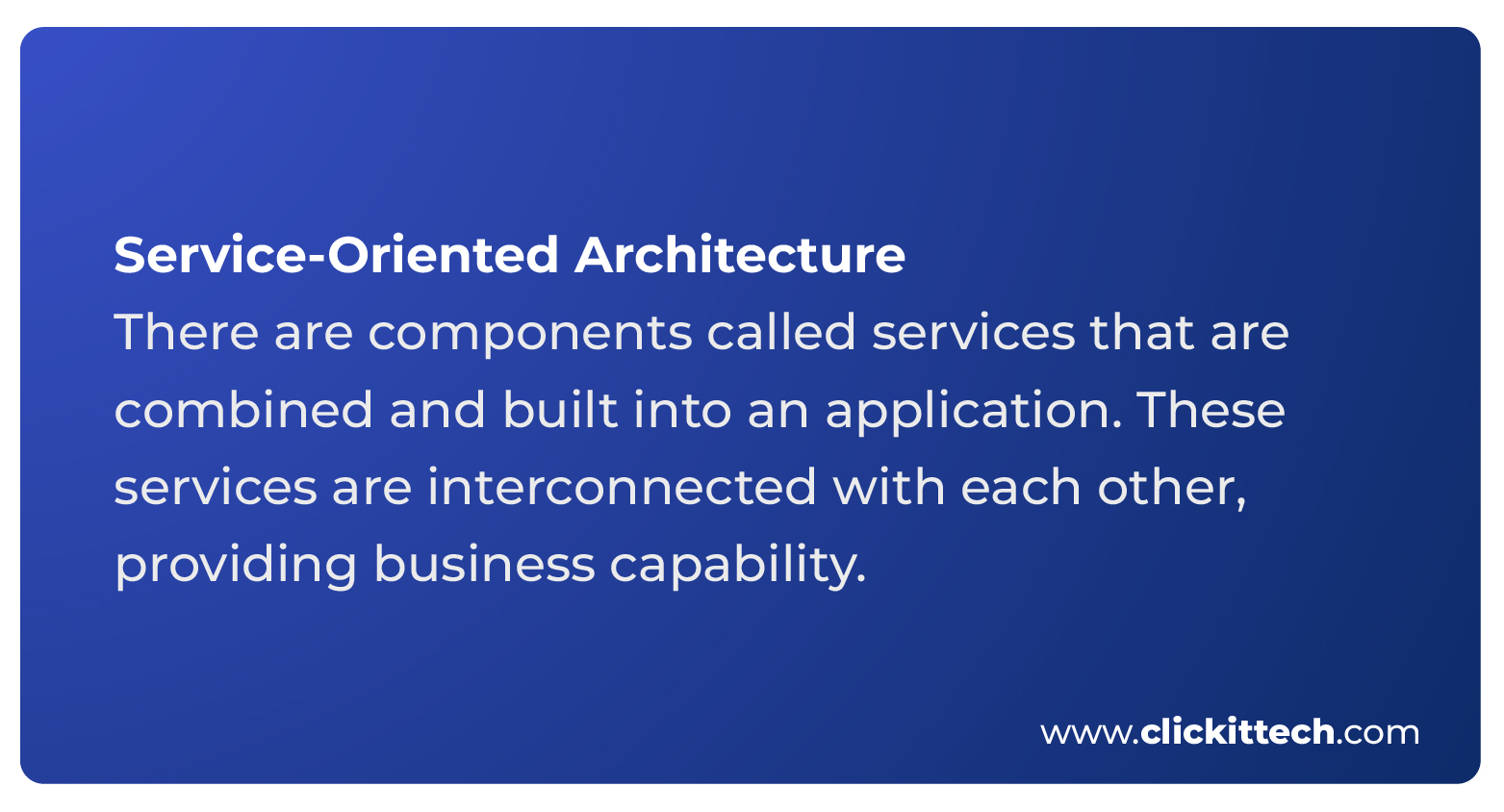
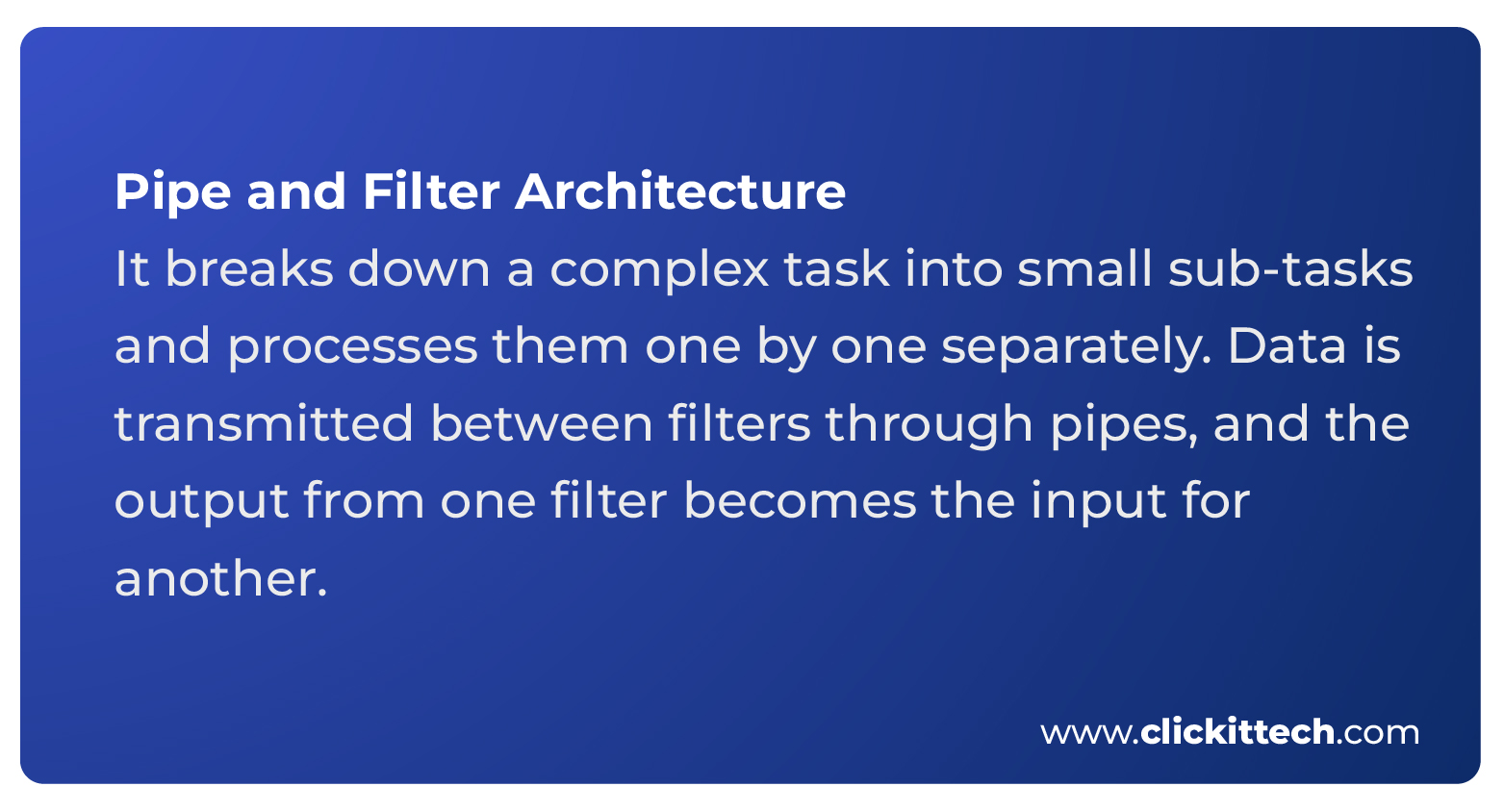
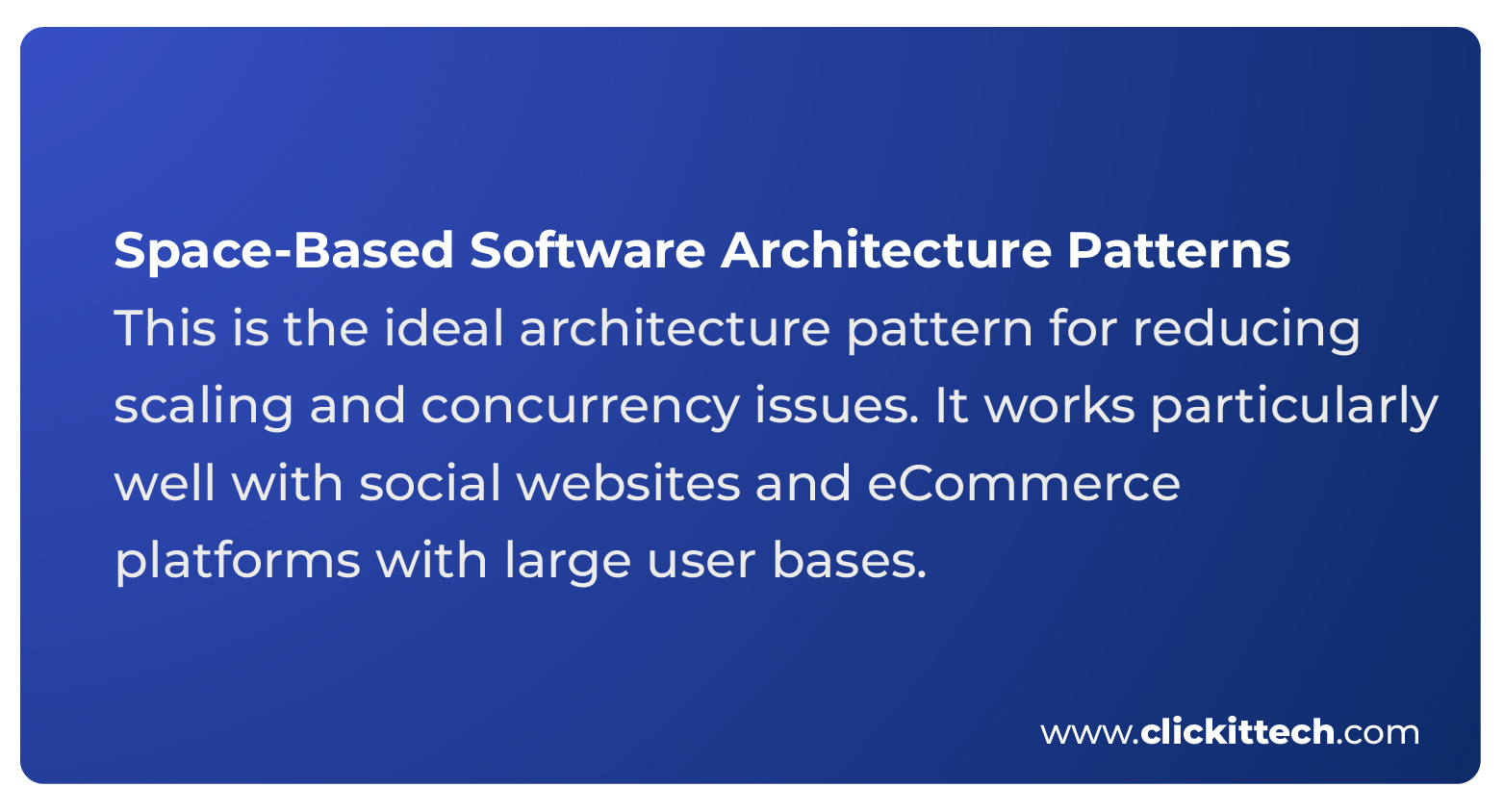

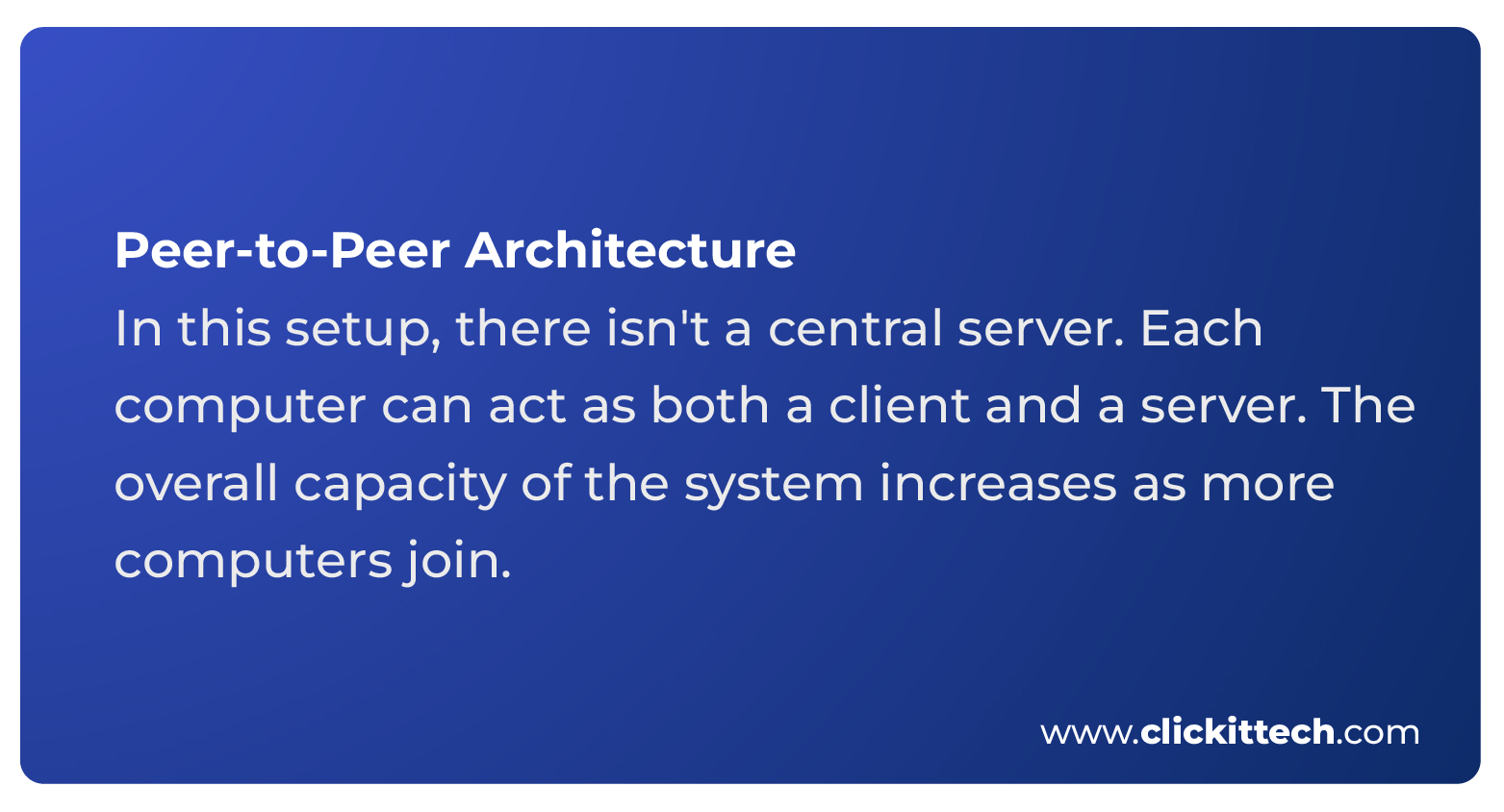
1. Layered Software Architecture Patterns
This layered architecture divides the whole project into sub-layers that are interconnected with each other. This approach is very popular among lots of developers and IT companies. Most commonly, a layered architecture consists of four layers.
- Presentation layer – UI of the program that the user interacts with.
- Application layer – Service layer that contains service classes
- Business logic layer – Contain logic and calculations related to the project
- Database Layer – Manage all data of the project
In addition to these, there may be extra layers like configuration layers.
Each layer in this architecture is separate within the program and is designated as closed, which makes it stand out. In order to move to the next layer, a request must pass through the layer below it.
Another key concept is the layers of isolation, which allow you to make changes within one layer without affecting the others. This approach is versatile and suitable for desktop, web, and mobile app projects.
Read our blog web application architecture to design the right architecture for your apps.
2. Microservices Architecture
Microservices architecture is one of the most popular software architecture patterns in the industry. It can break down a large system into smaller components, and most importantly, these small components can be developed, tested, and deployed independently. During system updates, developers can also make changes to these components, upgrade their versions, and deploy them without affecting the current system.
One of the earliest adopters of microservices architecture was Netflix. This architecture is particularly well-suited for systems that are experiencing rapid growth.
Discover the benefits of Microservices in our blog.
3. Monolithic Architecture
This software architecture pattern is designed to be self-contained, with components that are interconnected with each other. For compilation, all components and their associated elements must be present.
Monolithic applications typically have large codebases, which can be challenging to manage. Another issue is that if one component needs updating, all other elements and components must be rewritten, tested, and compiled. This makes the process more time-consuming.
Learn about the ultimate comparison of microservices vs monolithic
4. Event-Driven Architecture
This is another popular method of using architectural patterns that focuses on having software components recognize, process, and react to specific ‘events’ like keystrokes, scrolling, mouse clicks, etc.
The event-driven architecture allows app modules to function by actual occurrences. This pattern often belongs to one of two categories: mediator topology, which uses a central mediator to demonstrate numerous activities on an event bus, or broker topology, which links events collectively without one.
In this type of software architecture design pattern, publishers gather and store data in the event store, subscribers interpret and respond to the event, sources generate data when triggered by the UI, and sinks are where this data is stored.
5. Client-Server Architecture
The client-server architecture is another common software architecture with mainly two entities: clients and servers. The clients and server are connected with a specific protocol. The clients send a request to the server, then the server processes data and gives back a response.
Some disadvantages of this architecture include server overloads due to excessive client requests and the impact of a single server failure on multiple clients. This pattern is commonly used in email file-sharing applications and online banking apps, among others.

6. Service-Oriented Architecture
In a service-oriented architecture, there are components called services that are combined and built into an application. These services are interconnected with each other, providing business capability, Developer teams use this approach to reuse services in different system For example, a project with several sub-projects need to be authenticated. Instead of writing authentication for all sub-projects, this approach helps to create one authentication service and import that to all sub-projects.
7. Pipe and Filter Architecture
This architecture is like breaking down a complex task into small sub-tasks and processing them one by one separately. he code for these sub-tasks may be small and function as a filter. Developers can reuse, update, and deploy these filters. Data is transmitted between filters through pipes, and the output from one filter becomes the input for another. This pipe and filter architecture is most commonly used in compilers. Complexity and data loss between pipes are the disadvantages of this pattern.
8. Space-Based Software Architecture Patterns
This software architecture pattern is special because of its ability to overcome overloading problems. Many software systems interact with databases, and risk app crashes when the database can’t handle the load. To address this, the pattern introduces distributed shared memory.
As an example, Back-end and web components are contained in the processing unit. Developers can deploy smaller apps as single units, and large ones can be divided into different processing units. What’s notable about this pattern is that it operates without a central database.
This is the ideal architecture pattern for reducing scaling and concurrency issues. It works particularly well with social websites and eCommerce platforms that have large user bases.
9. Component-Based Architecture
The best way to understand this architectural pattern in software engineering is through the building blocks analogy. In this approach, we also design a system by combining small components. Modern frameworks and libraries like React and Angular use this architecture, which simplifies the system’s complexity during development.
Each component is designed to carry out a function in the manner specified by the architecture. Developers put components together using those that are contained in a library. For simplicity, components communicate with one another through application program interfaces.
Reusability, Extensibility, Replaceability, Encapsulation, and Independence are the main advantages of this architecture. Also, we can develop complex single-page web applications using component-based architecture. Most of the modern web applications use this software architecture design pattern.
10. Peer-to-Peer Architecture
This architectural pattern in software engineering is a server and client but differs from the client-server pattern. In this setup, there isn’t a central server. Each computer can act as both a client and a server. The overall capacity of the system increases as more computers join.
This architectural pattern in software engineering is commonly used in file-sharing apps and cryptocurrency networks like Bitcoin, as it tends to be more secure than other architectures.
How to Select the Right Software Architecture Pattern
When selecting the best Software architecture design patterns for your project, you must consider the key factors below.
Understand Your Requirements
First, you want to have a thorough understanding of your project’s requirements, including both functional and non-functional aspects. Then, prioritize and categorize these requirements to identify which ones are critical and which are optional. You need to consider scalability, performance, security, and integration needs.
Analyze the Problem Domain
Dive deep into the problem domain your application is addressing. Understand the domain-specific challenges, intricacies, patterns, and models that might influence your architectural decisions.
Assess Development Team Expertise
Evaluate whether your team has experience with particular software architecture design patterns and if they are comfortable using them. Assess the skills and expertise of your development team, identifying their strengths, weaknesses, and specialized knowledge.
Assess Available Resources
Determine whether you have access to specific tools, frameworks, or technologies that might influence your architectural choices. Time, budget, and hardware/software resources also need to be considered.
Prototype and Experiment
Consider creating prototypes or conducting experiments to test different software architecture design patterns. This can help you assess how well each pattern aligns with your requirements and constraints. Prototyping allows you to validate assumptions and make informed decisions.
Consult with Experts
Seek advice and consultation from experts in software architecture, both within your organization and from external sources. Discuss your project’s requirements, constraints, and goals with experienced architects who can provide valuable insights.
After all these steps, you can compare the advantages and disadvantages of each software architecture pattern and select the best one for your project.
Conclusion of Software Architecture Patterns
This article discusses several common software architecture design patterns, including Layered, Microservices, Monolithic, Event-Driven, Client-Server, Service-Oriented, Pipe and Filter, Space-Based, Component-Based, and Peer-to-Peer architectures. Each of these patterns serves specific purposes and can be chosen based on the unique requirements and constraints of a project. We touched on some of the architectural patterns in software engineering examples as well.
Modern software projects and software architecture design patterns are invaluable tools that provide organized, proven approaches to building software systems. They offer numerous benefits, including improved quality and efficiency, enhanced productivity, modularity, code reusability, and reduced risk.
Software Architecture Patterns FAQs
Software architecture patterns provide tested solutions for common design challenges. A proven system architecture design offers guidelines for organizing code, separating concerns, and promoting reuse. Consequently, development becomes more productive, errors are reduced, and the system is easier to manage.
Common coding issues can be solved by reusing and testing software development techniques. These software architecture design patterns help programmers create more understandable, maintainable, and well-organized code.
Software architecture design patterns offer numerous benefits, including improved reusability, scalability, maintainability, and quality assurance. They enhance communication among development teams, promote problem-solving, and provide a structured framework for designing robust and efficient software systems.









